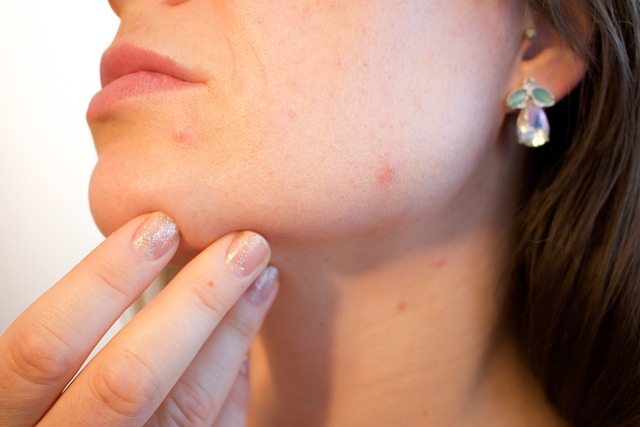Getting Rid Of Acne Scars—The Ultimate Guide

Acne scars can be a frustrating and persistent reminder of past breakouts. They can affect your self-confidence and make you feel self-conscious about your appearance. But fear not! In this ultimate guide, we will explore various methods and treatments to help you get rid of acne scars and achieve smoother, clearer skin.
Understanding Acne Scars
Before we dive into the treatments, let's first understand what acne scars are and how they form. Acne scars are the result of inflammation caused by acne breakouts. When the skin pores become clogged with excess oil, dead skin cells, and bacteria, it can lead to the formation of pimples, blackheads, or whiteheads. In some cases, the inflammation can damage the skin tissue, leaving behind scars.
There are different types of acne scars, including:
-
Ice Pick Scars: These are deep, narrow scars that resemble small puncture marks on the skin.
-
Boxcar Scars: These scars have sharp edges and are wider than ice pick scars, giving them a box-like appearance.
-
Rolling Scars: Rolling scars create a wave-like texture on the skin due to the underlying fibrous bands pulling the skin downward.
-
Hypertrophic Scars: These scars are raised and can be red or pink in color. They occur when the body produces too much collagen during the healing process.
-
Keloid Scars: Similar to hypertrophic scars, keloid scars are raised and extend beyond the boundaries of the original acne lesion. They can be itchy and may continue to grow over time.
Treatment Options for Acne Scars
Now that we have a better understanding of acne scars, let's explore the various treatment options available to help diminish their appearance.
1. Dermabrasion
Dermabrasion is a procedure that involves removing the top layer of skin using a rotating brush or diamond wheel. This treatment helps to smooth out the skin's surface and reduce the appearance of acne scars. It is most effective for shallow scars and may require multiple sessions for optimal results.
2. Microdermabrasion
Similar to dermabrasion, microdermabrasion also exfoliates the skin but uses tiny crystals or a diamond-tipped wand to gently remove the outer layer of dead skin cells. This treatment is less invasive than dermabrasion and is suitable for mild acne scars. Multiple sessions may be needed to achieve the desired outcome.
3. Chemical Peels
Chemical peels involve applying a chemical solution to the skin, which causes the outer layer to peel off, revealing smoother skin underneath. This treatment can help improve the appearance of acne scars by promoting cell turnover and collagen production. The strength of the chemical peel will depend on the severity of the scars.
4. Laser Resurfacing
Laser resurfacing is a non-invasive procedure that uses laser technology to remove the damaged outer layer of skin. This stimulates collagen production and helps to improve the texture and appearance of acne scars. Different types of lasers can be used, including ablative and non-ablative lasers, depending on the depth and severity of the scars.
5. Fillers
Dermal fillers can be injected into depressed acne scars to plump up the skin and make the scars less noticeable. The fillers can be made of various substances, such as hyaluronic acid or collagen, and provide temporary improvement in the appearance of acne scars. Regular touch-ups may be required to maintain the results.
6. Punch Excisions
Punch excisions are typically used for deep acne scars, such as ice pick scars. This procedure involves removing the scar tissue and closing the wound with stitches or a skin graft. It helps to create a smoother skin surface and can be combined with other treatments for optimal results.
7. Microneedling
Microneedling, also known as collagen induction therapy, involves using a device with tiny needles to create controlled micro-injuries in the skin. This stimulates collagen production and helps to improve the texture and appearance of acne scars. Multiple sessions may be needed to achieve the desired outcome.
8. Topical Treatments
In addition to the above procedures, there are also various topical treatments available that can help fade acne scars over time. These treatments often contain ingredients like retinoids, vitamin C, or alpha hydroxy acids, which promote cell turnover and collagen production. Consistent and long-term use is key to seeing results with topical treatments.
Prevention and Self-Care Tips
While treating acne scars is important, it's equally crucial to prevent new breakouts and take care of your skin to minimize the risk of scarring. Here are some tips to help you maintain healthy, clear skin:
-
Follow a consistent skincare routine that includes cleansing, toning, and moisturizing.
-
Use non-comedogenic and oil-free skincare products to avoid clogging your pores.
-
Avoid picking or popping pimples, as this can lead to further inflammation and scarring.
-
Protect your skin from the sun by wearing sunscreen with a high SPF.
-
Maintain a healthy diet and drink plenty of water to keep your skin hydrated.
-
Manage stress levels, as stress can contribute to acne breakouts.
Conclusion
Acne scars can be a source of frustration, but with the right treatments and self-care, you can minimize their appearance and achieve smoother, clearer skin. Whether you opt for professional procedures like dermabrasion or laser resurfacing, or choose to incorporate topical treatments into your skincare routine, consistency and patience are key. Remember to consult with a dermatologist to determine the best course of action for your specific acne scars. With time and dedication, you can say goodbye to acne scars and hello to a more confident you!
Disclaimer: The information provided in this blog post is for educational purposes only and should not be considered as medical advice. Please consult with a dermatologist or healthcare professional for personalized recommendations.